"The Determinants of the Innovation
Districts" presented at BARI 2024 Coneference.
April 12 , 2024
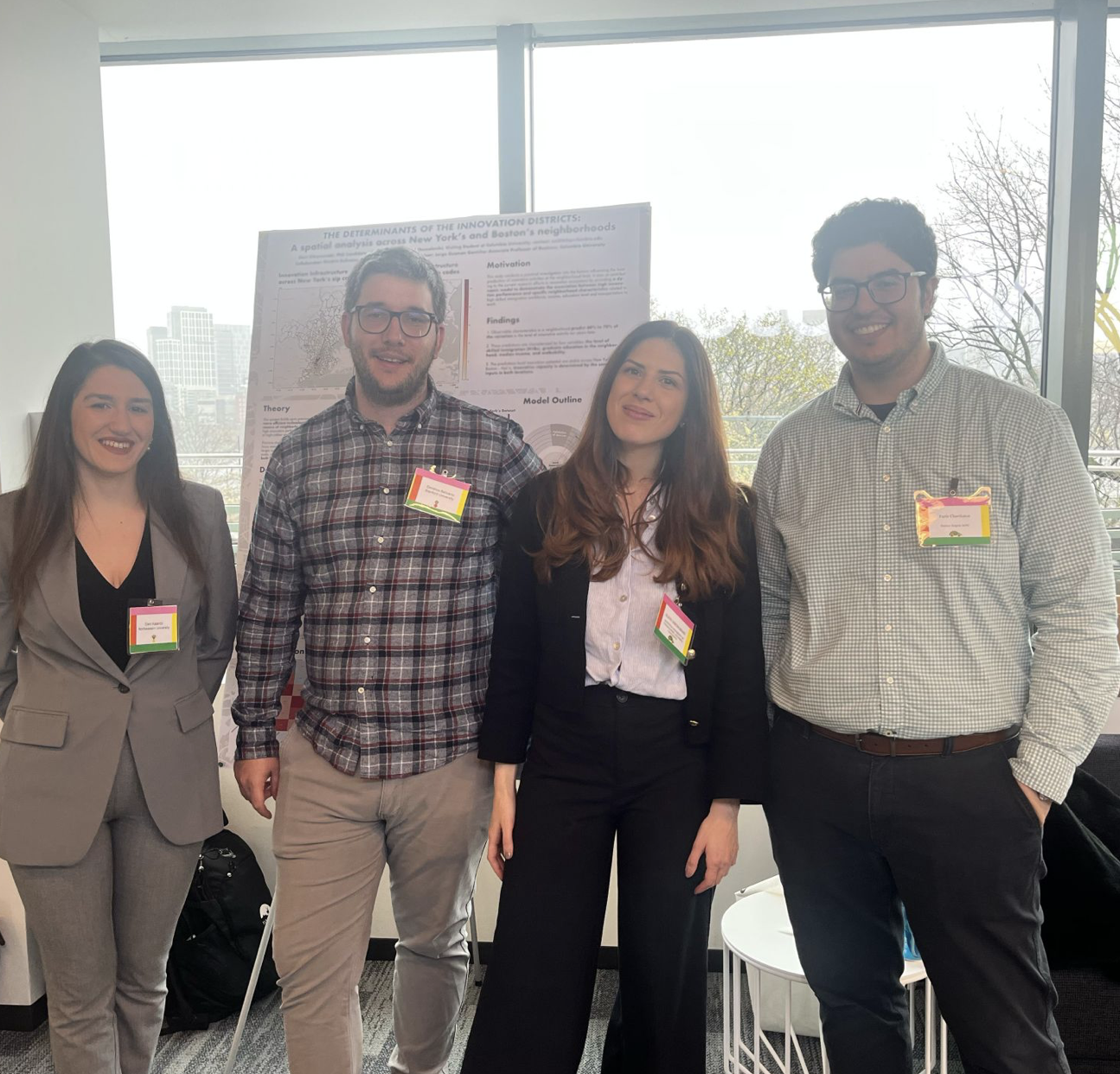

Congrats to the Boston Area Research Initiative team for hosting an outstanding Conference at Microsoft AI Center. It was great sharing our insights, and learning from the latest advancements with fellow professionals in the fields of Urban Informatics and Public Policy, but also presenting current work on 'The determinants of the Innovation Districts', supervised by professor Guzman and supported with valuable insights by professor Kakderi and Dimitris Belivanis. Thank you to everyone who provided feedback for the project and stopped by to chat. The enthusiasm and exchange of ideas were truly inspiring!
For the project, we envision to create a tool that allows policy makers to track the advancement of districts. I would love to continue the conversation, discuss potential collaborations with the city departments and share more about our work.
Looking forward to staying connected with this vibrant community!
#InnovationDistricts
#BigDataAnalytics
#InnovationDeterminants
#InnovationPolicy
“"Global Urban Greening Strategies; From Policies to
Community Action" presented at Placemaking
Europe Week.
September 27 , 2023
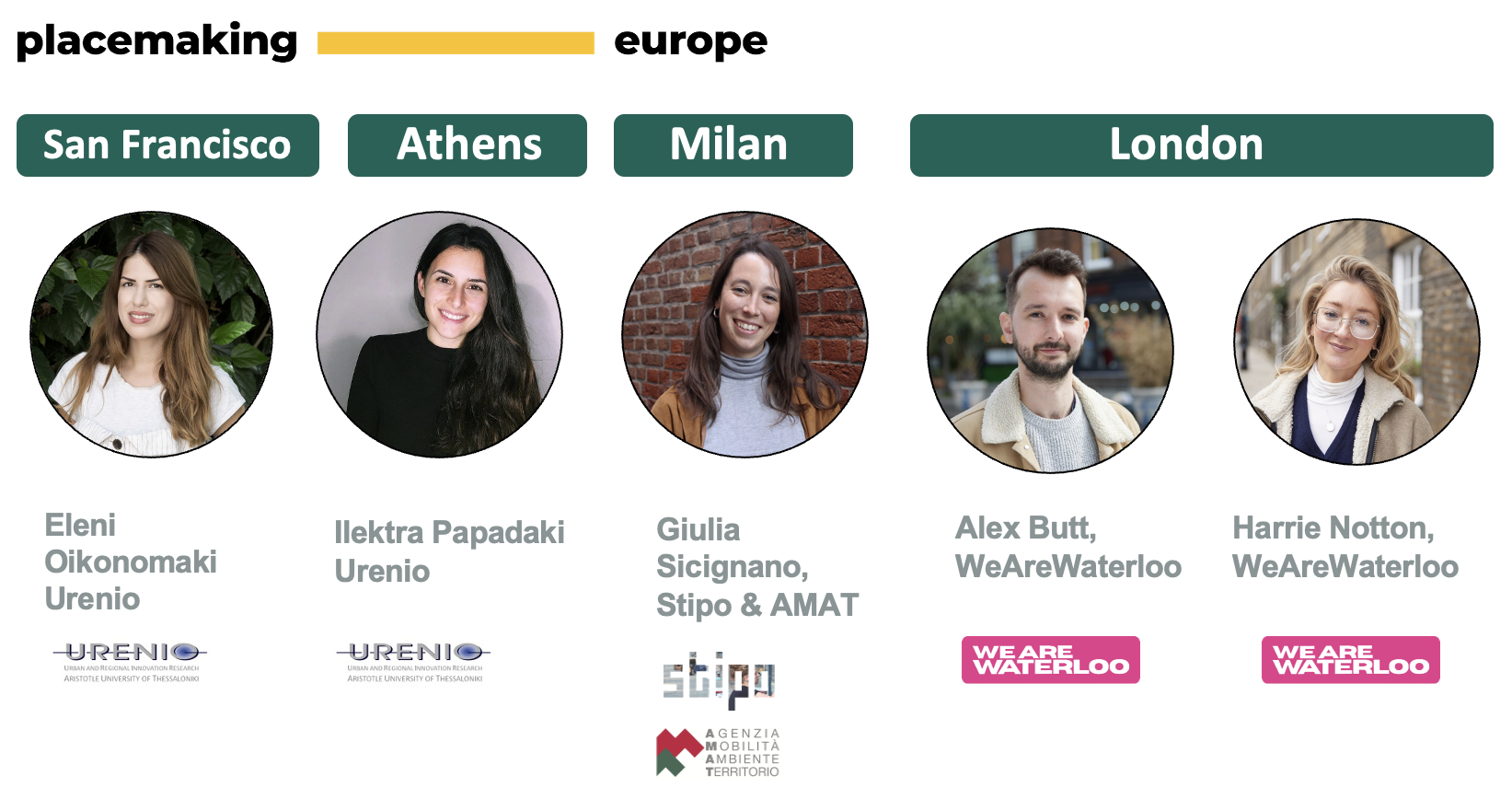

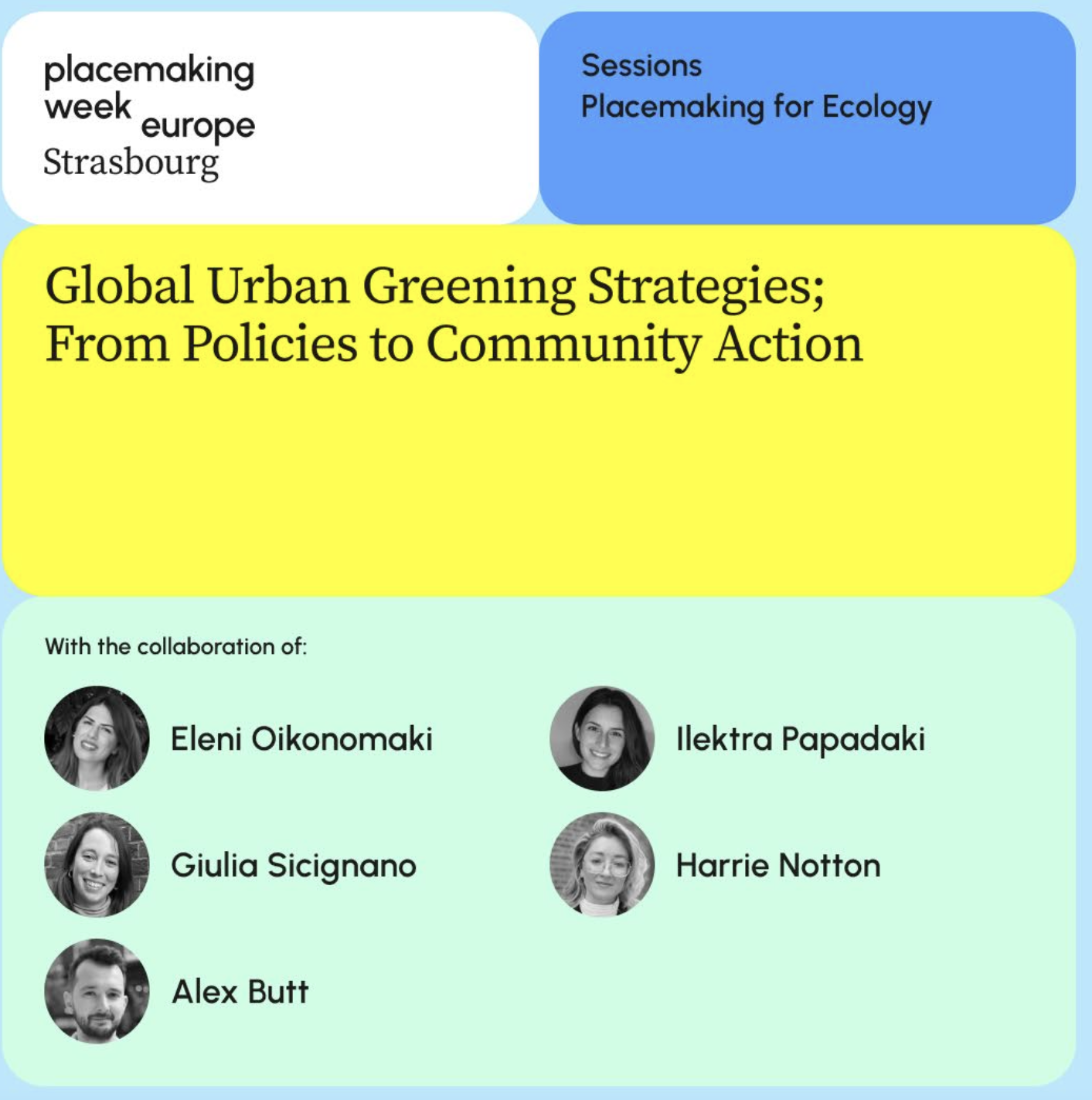
Placemaking Europe Week 2023 is over and I feel grateful to be part of this inspiring event that connects practitioners, academics, community leaders, and policy makers from all over the world to discuss about placemaking for ecology, and civic engagement and place-led development. Strasburg itself was an excellent choice for the event, a place with an emphasis on green initiatives.
With Giulia,Ilektra Alex, Harrie, we had the chance to co-organize the session named "Global Urban Greening Strategies; From Policies to Community Action", where we delved into a comprehensive array of policies spanning international, EU, and local levels. We dissected typologies of interventions, examining strategies for sidewalk, building, neighborhood, and entire city. The central theme was clear: fostering a sustainable urban environment requires a multi-faceted approach.
Two illuminating case studies from Milan and London underscored the transformative power of citizen-driven initiatives. Milan showcased a case of tactical urbanism, where citizens collaborated with local authorities to permanently reclaim urban space.
London presented an alternative model through its WeAreWaterloo Business Improvement District (BID). Local businesses pooled resources and funding to enhance the neighborhoods with green interventions. This approach highlights the potential for public-private partnerships in driving urban greening.
Participants were tasked with discussing urban greening projects where citizens played a pivotal role. In group discussions, they analyzed success factors, identified challenges. It became evident that successful urban greening initiatives hinged on factors such as community engagement, political will, and effective resource allocation.
One of the key questions to the participants was the pivotal role of technology in mobilizing citizens and scaling up initiatives. Our seminar concluded with a resounding affirmation that through harnessing citizen power, embracing technologies, and forging strategic partnerships, we can transform our cities into vibrant, sustainable havens for all.
“Navigating the Green Transition During
the Pandemic Equitably: A New
Perspective on Technological Resilience
Among Boston Neighborhoods Facing
the Shock” published as chapter of the
book "New Metropolitan Perspectives:
Transition with Resilience for
Evolutionary Development".
May 30 , 2023
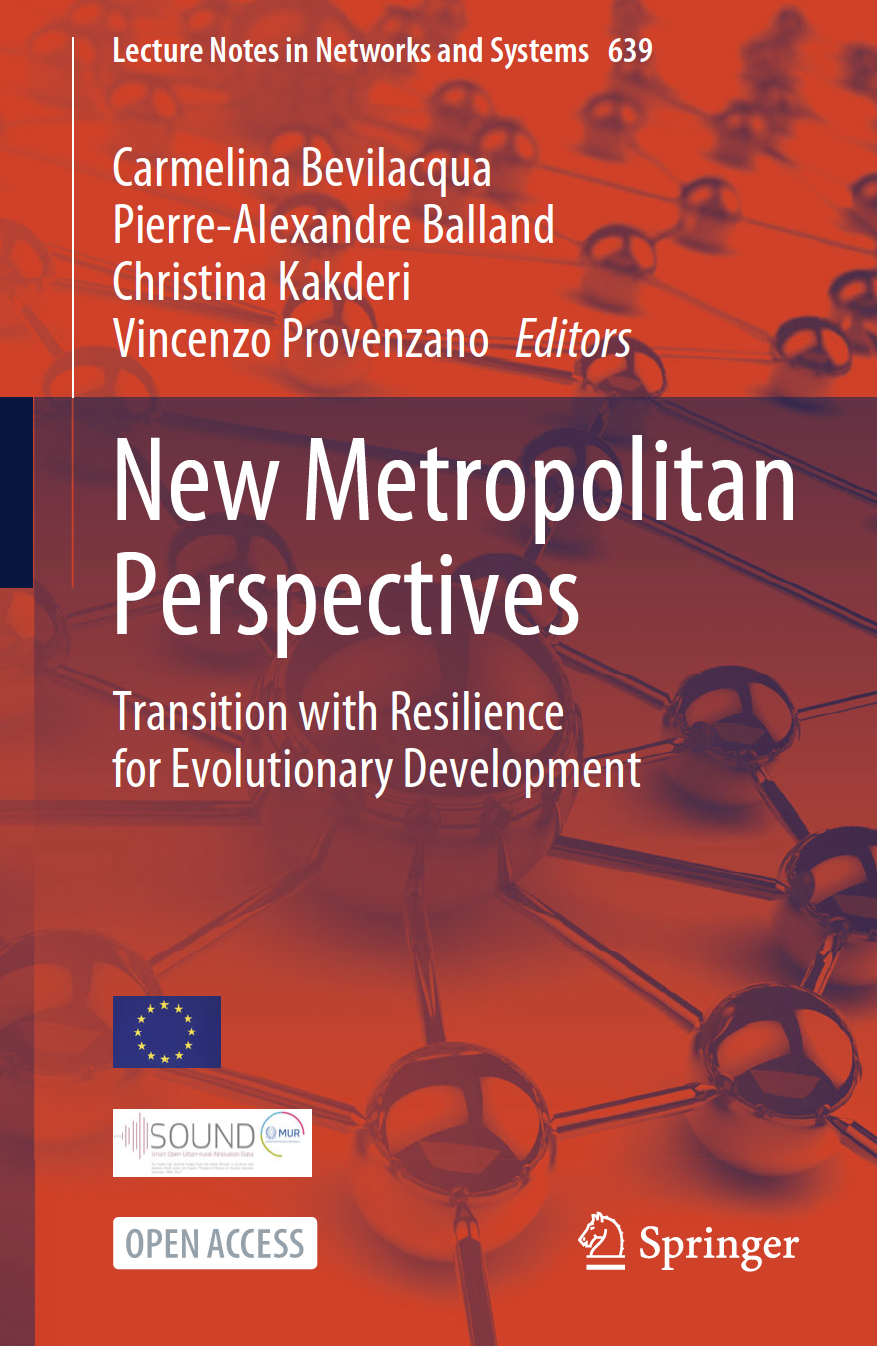
New study out!
Together with Poya Sohrabi, Nourhan Hamdy Christina Kakderi & Carmelina Bevilacqua we have been working on the chapter 'Navigating the Green Transition During the Pandemic Equitably: A New Perspective on Technological Resilience Among Boston Neighborhoods Facing the Shock' for the book "New Metropolitan Perspectives: Transition with Resilience for Evolutionary Development".
https://lnkd.in/gbaFcmK8
The study is addressing the following question: what was the role that the #pandemic played in accelerating or slowing #Boston’s green investments, and to what extent do different racial and socioeconomic groups invest in #greentechnologies during this period?
Intriguingly, the study’s findings show that racial differences within the city have no significant impact on tech-related expenditures. There is a clear negative correlation between poverty rate and investment, which indicates the reverse relationship between these #socioeconomic factors. The study concludes that city authorities will need to address the challenges of each community achieving green transition with more targeted programs based on its needs.
#Technological #resilience
#bigdataanalytics
#covid19pandemic
#greentransition
#urbaninnovation
#climatechange
#socioeconomicanalysis
#leed
“Enabling real-time & big data driven
analysis to detect innovation city
patters
and emerging innovation ecosystems at
the local level” presented at HCI
International
Conference 2022
July 1 , 2022
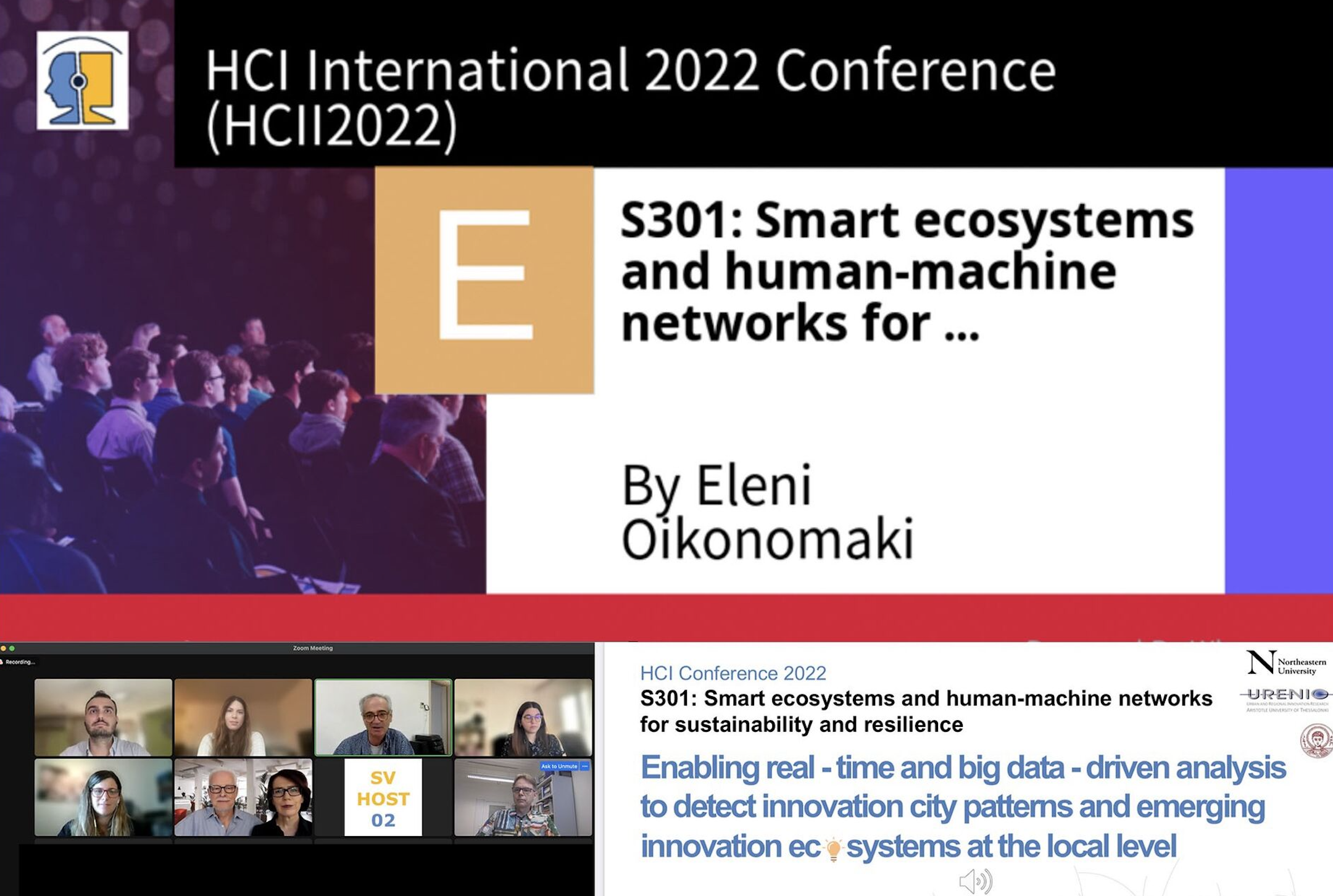
My attendance at HCII 2022 is over and I can say that I enjoyed participating! Having the chance to listen to interesting talks and deliver my presentation on ‘enabling big data driven analysis to detect innovation city patterns and emerging innovation ecosystems at the local level’, has been an enriching experience.
I was so eager to share my published paper, a first attempt to understand the capabilities of innovation performance measurement toolkits at the sub-regional (local) level to incorporate big data analytics.
Few key points:
> Several studies have concluded with the consideration that local innovation indexes might be useful sources of information for policymakers, given the fact that microregions appear to have specific strengths and weaknesses in terms of innovation and therefore they face specific challenges and require differentiated policies even within a given region.
> Although data mining and big data analysis in the urban environment has grown exponentially in recent decades, the organization and execution of how we interact with this data and use it for identifying innovation city patterns are still in great need of advancement.
#phd #innovationecosystems #bigdata
“Building resilient urban futures by setting a mission for
sustainability in the post-oil city and post COVID-19 era”
presented at ISOCARP 2020
World Planning Congress
October 29, 2020
It was such a great honor to present our research work at #ISOCARP2020 World Planning Congress, Planning for #UrbanGreenDeals and open a dialogue about:
How will this global experience lead us to rethink the way we develop and (re)design our cities to address the future challenges?
How can temporary mobility planning measures serve the accomplishment of long-term goals?
Our paper with title "Building resilient urban futures by setting a mission for sustainability in the post-oil city and post COVID-19 era", written in collaboration with Christina Kakderi and Ilektra Papadaki examines how current mobility initiatives affect the vision of post-oil cities and identifies solutions arising from the use of ICT, the concepts of #smartcity and #visionzero to make infrastructure, public spaces and mobility networks adapt better to the new spacing measures.
It was very inspiring to see the work of all the other presenters of "Post–Covid Mobility: Modelling the future" session.
You can read more in detail about the sessions on the Congress website!
“REIMAGINING THE PUBLIC REALM
A Framework to Build Resilient
Communities During &
After the Pandemic” published on
SmithGroup website
October 29, 2020
An article that was written in collaboration with Georgia Sarkin (main author) and my colleagues at SmithGroup Heather Chung, Stet Sanborn.
Read the whole article here!
Fast Company selects Collective
Obscura as a 2020 World Changing
Company Finalist

April 28, 2020
With over 3,000 entries to their World Changing Ideas Awards competition this year, Fast Company magazine has recognized "Collective Obscura" as a 2020 World Changing Idea of the Year finalist.
Now in its fourth year, Fast Company’s World Changing Ideas awards honor products, concepts, companies, policies, and designs that are pursuing innovation for the good of society and the planet. Categories range from Advertising to Food, Health and Wellness, to Social Justice and Energy.
Projects in any category, created by undergraduate or graduate students. Read about the winner: a redesigned rape kit that aims to empower assault survivors.
FINALISTS
Aicatcher, Deepak Mallya
Bootcamps for Change, Katie Heggtveit
Collective Obscura, Eleni Oikonomaki, Bryan Truitt, Rashad Timmons, and Lian Song
Cress Health, Michael Lai and Justin Kim
Durex: Hiding in Plain Sight, Matias Chiquis, Tuhin Phari, and Leonardo Fonseca
Equity for Artists, Amy Whitaker
Farror, Yumeng Ji, Andrea Kang, and Ke Hu
Form, Rachel Balma
Geoidentity, Giorgia Malandrino
Kiri, Nick Porfilio and Jacob Starley
M-Hair, Augmented Human Lab, University of Auckland
Oasis, Jay Jones
OceanCloud, Alice Sueko Müller
Pluto, Maxine Anderson, Michael Ioffe, Ryan Laverty, and Joseph Passanante
HONORABLE MENTION
Animo, Sebastian Hunkeler
Blind Maps, Mriga Suchdeva and Saloni Mittal
Mercury OS, Jason Yuan and Dennis Jin
Museum of Tomorrow, Jessica Ho and Kejian Zhao
okaTrack, Christy Zhang, Hanna Lauterbach, and Chris Spaulding
Out of the Box, Yu Qian Ang and Klo’e Yim Chew Ng
Panic Aid, Hatem El Akad, Refaat Rico, Ahmed Radwan, and Abdo Soliman
Prospero, Samantha Chan, Suranga Nanayakkara, and Haimo Zhang
Tradicion Peruana Peruvian Hot Sauce, Antoinette Munoz and Brett Addington
![]()
Collective Obscura at
Shenzhen Biennale
December 13, 2019
Collective Obscura was selected to be exhibited in the "Eyes of the City" section, curated by MIT professor Carlo Ratti (Chief Curator), Politecnico di Torino and SCUT (Academic Curators). Learn more here!

Watch the video of the world’s most attended architecture exhibition, opening in December 2019 in Shenzhen, China that prompts a critical reflection on how digital technologies are impacting urban life!

BCNM at Shenzhen Biennale
December 15, 2019
BCNM students Rashad Timmons, Lian Song, Bryan Truitt, and Eleni Oikonomaki are presenting their work, Collective Obscura, at the world’s most attended architecture exhibition! The Shenzhen Biennale prompts a critical reflection on how digital technologies are impacting urban life.
Collective Obscura was chosen to be exhibited in the "Eyes of the City" section, curated by MIT professor Carlo Ratti (Chief Curator), Politecnico di Torino and SCUT (Academic Curators).
From the description of Eyes of the City:
What we are currently facing is an “utopia or oblivion” crossroads, to say it with the words of one of the most notable thinkers of the past century, Richard Buckminster Fuller. We believe that one of the fundamental duties of architects and designers today is to grapple with this momentous shift, and engage people in the process. “Eyes of the City” aims to experiment with these emerging scenarios to better comprehend them, deconstructing the potential uses of new technologies in order to make them accessible to everyone and inspire people to form an opinion. Using critical design as a tool, the exhibition seeks to create experiences that will encourage people to get involved in defining the ways in which new technologies will shape their cities in years to come. For this reason, it recognizes in Shenzhen’s Futian high-speed railway station its natural home – a place where to reach a broad, diverse audience of intentional visitors and accidental passersby, and a space where, just like in most other liminal transportation hubs, the impact of an “Eyes of the City” scenario is likely going to be felt the most.
Learn more here!
You can view a preview video of the work, with our project included here!
From the description of Collective Obscura:
Collective Obscura explores the ways fabrics and critical fashion design can be used to counter the ubiquity of surveillance technologies.
Attuned to the ways surveillance and various forms of biometric data capture are used to target, criminalize, and dox people, especially those within vulnerable communities, our exhibition showcases designs of our wearable technologies—sewn garments that mobilize the material properties of various fabrics to achieve tactics of camouflage, obscurity and opacity. Through garments and modes of fabrication, the team emphasizes the use of textile craft as a subversive tactic of embodied resistance against centralized, mechanistic surveillance. Rather than reading the collection of wearables as nontechnical, they assert that the fabrics themselves inhere a suite of technological affordances that can be activated through the strategic inflection of their material properties and are quite effective when directed against facial detection software.
The exhibition also includes a series of mini-workshops where participants learn accessible and easily reproducible methods of fabrication that can undermine facial detection systems. The team feels it is crucially important to equip participants with the tools to utilize some of these strategies in their everyday lives. The workshops will include how to quickly transfer subversive prints onto apparel and accessories, instruction on useful fabrication techniques, and how to use light and gesture to impair facial detection systems.

Jacobs Institute of Design
Innovation Catalyst Grant
October 11, 2019
MEET THE INNOVATION CATALYSTS STUDENT GRANT WINNERS
“The Jacobs Institute Innovation Catalysts, made possible by the Eustace-Kwan Family Foundation, is a grant program that helps Berkeley’s student innovators unlock potential in their projects. This fall, eleven diverse and creative projects were selected by the Jacobs student advisory board and leadership team to be a part of the grant program. During the fall semester, grant winners will work on their projects with the support of funding, mentorship, and other resources at Jacobs Hall and the CITRIS Invention Lab. Read more below about the fall 2019 cohort.
Collective Obscura
Eleni Oikonomaki & Bryan Truitt
Though surveillance technologies have become ubiquitous in modern society and have some benefits, they can also be abused. Oikonomaki and Truitt are using fashion to explore these complex issues, through crafting dynamic garments and accessories that undermine systems of surveillance and identification. Their project began in the New Media course Critical Making, taught by Professor Eric Paulos. For their final course project, they produced a collection of three wearables, each using a different strategy of avoiding facial recognition. The pair plans to use their grant to develop at least one new type of anti-facial recognition wearable and an open source guideline for testing anti-facial recognition technologies.”

BCNM Fall 2019 Conference Grant Recipient
October 7, 2019
Announcing the Fall 2019 Conference Grant Recipients
The Berkeley Center for New Media is thrilled to provide small grants to our graduate students to help them share their innovative research at the premier conferences in their field. We look forward to seeing the work of these students spread across the globe!
Eleni Oikonomaki, Bryan Truitt, Rashad Timmons,Lian Song
2019 Shenzhen Bi-city Biennale of Urbanism/Architecture (UABB) Exhibition | Shenzen, ChinaYou can find more information here!
Collective Obscura
At the 2019 Shenzhen Bi-city Biennale of Urbanism/Architecture (UABB), our group will produce and curate an exhibition that explores the ways fabrics and critical fashion design can be used to counter the ubiquity of surveillance technologies.
Attuned to the ways surveillance and various forms of biometric data capture are used to target, criminalize, and dox people, especially those within vulnerable communities, our exhibition showcases designs of our wearable technologies—sewn garments that mobilize the material properties of various fabrics to achieve tactics of camouflage, obscurity and opacity. Through our garments and modes of fabrication, we emphasize the use of textile craft as a subversive tactic of embodied resistance against centralized, mechanistic surveillance. Rather than reading our collection of wearables as nontechnical, we assert that the fabrics themselves inhere a suite of technological affordances that can be activated through the strategic inflection of their material properties and are quite effective when directed against facial detection software.
Our exhibition also will include a series of mini-workshops where participants will learn accessible and easily reproducible methods of fabrication that can undermine facial detection systems. We feel it is crucially important to equip participants with the tools to utilize some of these strategies in their everyday lives. The workshops will include how to quickly transfer subversive prints onto apparel and accessories, instruction on useful fabrication techniques, and how to use light and gesture to impair facial detection systems.